1. India: Days of Dancing and Colorful Traditions
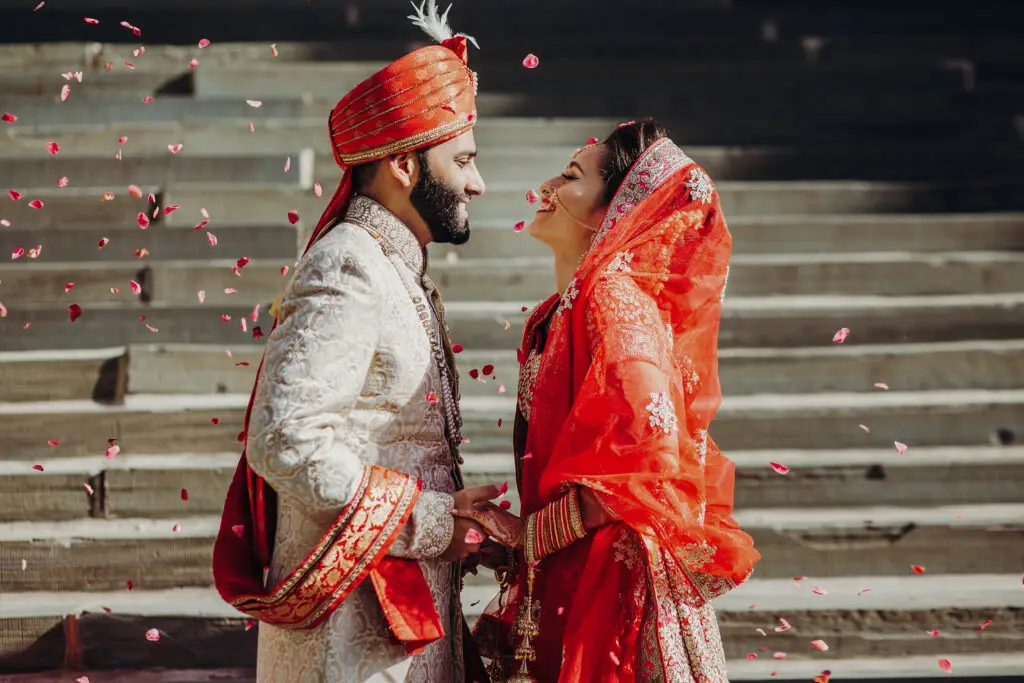
Indian weddings are nothing short of spectacular, often lasting multiple days and filled with vibrant customs. The pre-wedding festivities kick off with the Mehendi ceremony, where the bride’s hands and feet are adorned with intricate henna designs. Then comes the Sangeet, a night of dancing and music where both families show off their best moves. On the big day, the groom arrives on a decorated horse or even an elephant in a grand Baraat procession. The actual wedding ceremony is full of sacred rituals, including the Saptapadi, where the couple takes seven steps around a fire, making lifelong vows. The celebrations don’t stop there—receptions can be massive, with incredible food, dazzling outfits, and nonstop dancing says Brides.
With so many traditions, Indian weddings are a mix of joy, family bonding, and deep cultural significance. Guests are treated to elaborate feasts featuring regional specialties, and the outfits are a dazzling display of color and craftsmanship. It’s not uncommon for a single wedding to host hundreds or even thousands of guests. The attention to detail in decorations, music, and even choreographed performances make these weddings unforgettable. The atmosphere is electric, and everyone—young and old—gets involved in the celebrations shares Who What Wear.
2. Mexico: A Fiesta That Lasts All Night
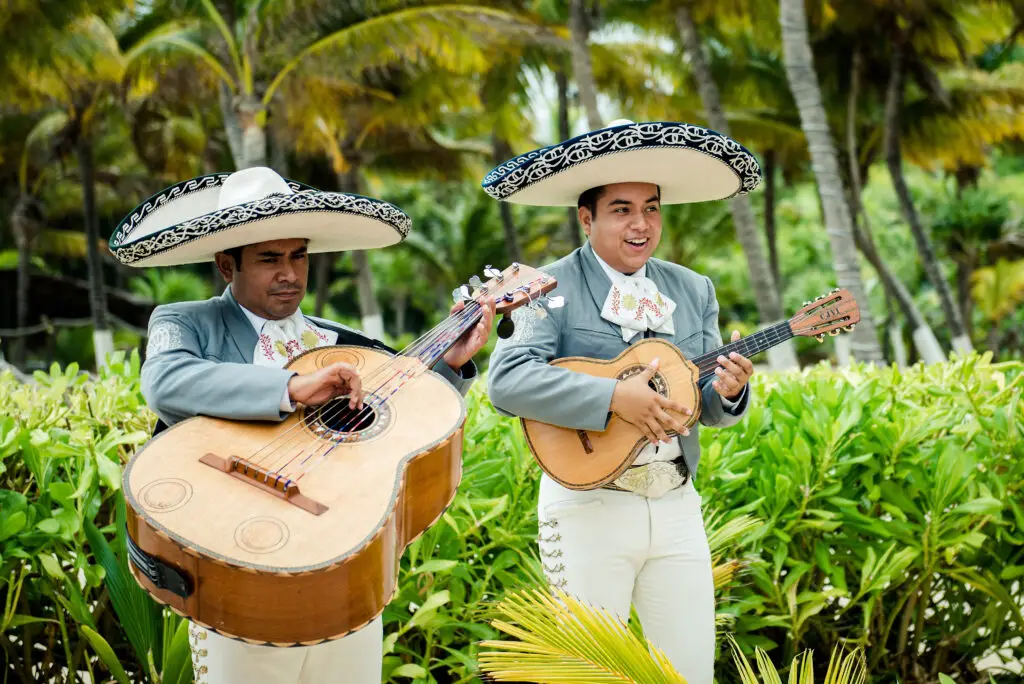
Mexican weddings blend deep-rooted Catholic traditions with a lively fiesta atmosphere. The ceremony often takes place in a grand church, followed by a reception that lasts well into the night. One of the most charming traditions is “el lazo,” where a large rosary or ribbon is draped around the couple to symbolize unity. The reception kicks off with Mariachi bands playing traditional tunes, and guests enjoy a feast featuring tacos, mole, and tequila says Essence.
Dancing is a huge part of the celebration, especially the “Money Dance,” where guests pin cash to the bride and groom as they dance. The energy never fades, thanks to games, fireworks, and nonstop music. Some weddings even have a “tornaboda,” an after-party where close friends and family keep celebrating until sunrise. It’s a wedding and a party rolled into one, where love and festivity go hand in hand.
3. Nigeria: A Celebration of Culture and Elegance
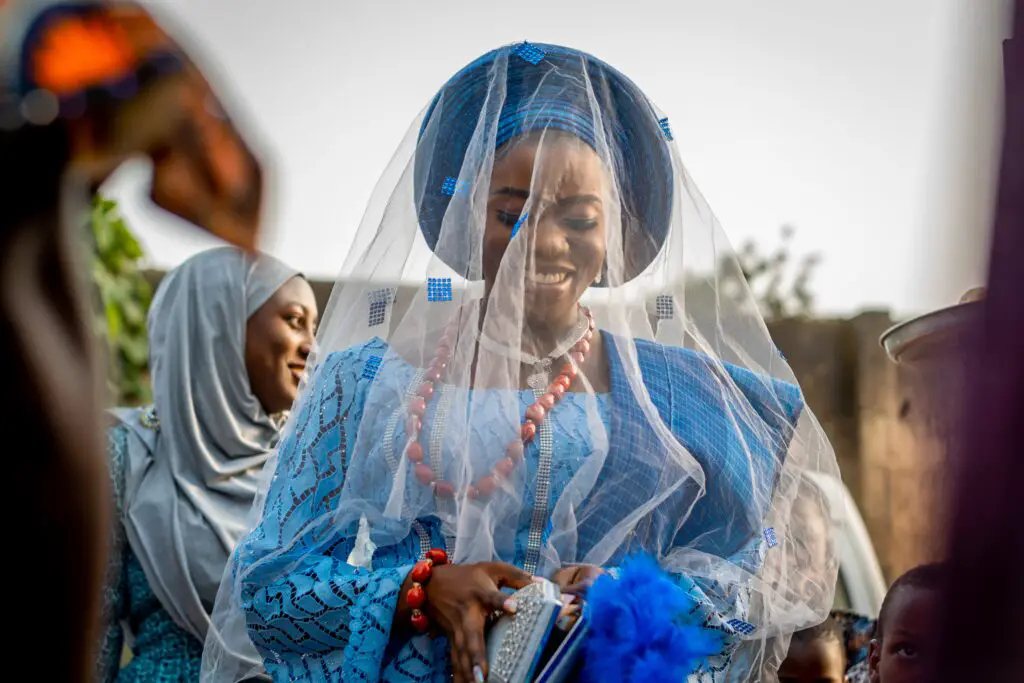
Nigerian weddings are known for their bold colors, lavish outfits, and high-energy festivities. Many couples have two ceremonies: a traditional wedding reflecting their ethnic heritage and a Western-style white wedding. The traditional ceremony is full of symbolic customs, including the groom’s family presenting gifts and kneeling before the bride’s family to show respect. The couple and their guests wear stunning, customized outfits made from luxurious fabrics like Ankara and Aso Oke says Brandon Sun.
Dancing plays a huge role, especially when the couple is “sprayed” with money on the dance floor, a gesture of goodwill and prosperity. Guests are treated to a feast of jollof rice, suya, and other local delicacies. Music ranges from live drummers to Afrobeats, ensuring that no one stays seated for long. Nigerian weddings are a perfect blend of tradition, opulence, and pure joy, making them unforgettable experiences.
4. Greece: Plate-Smashing and Endless Dancing
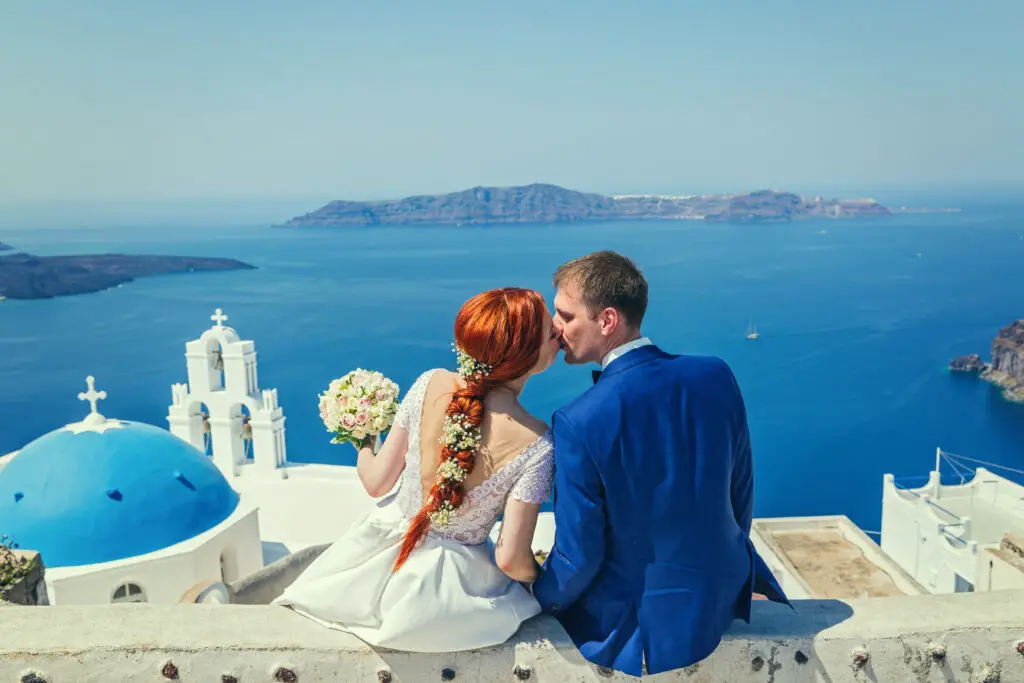
Greek weddings are full of life, laughter, and age-old traditions that bring everyone together. The ceremony itself is deeply symbolic, with the crowning of the bride and groom representing their unity. Once the formalities are over, the reception turns into a full-blown party, complete with traditional Greek dances like the Kalamatianos and Tsamiko. Ouzo flows freely, and long tables are filled with delicious dishes like lamb, moussaka, and baklava.
One of the most famous Greek wedding traditions is plate-smashing, which symbolizes good luck and warding off evil spirits. The atmosphere is electric, with guests clapping, cheering, and joining hands to dance in circles for hours. It’s a celebration where everyone—from toddlers to grandparents—hits the dance floor. Greek weddings aren’t just about two people getting married; they’re about bringing entire families and communities together for an unforgettable night.
5. China: Symbolism and Spectacle
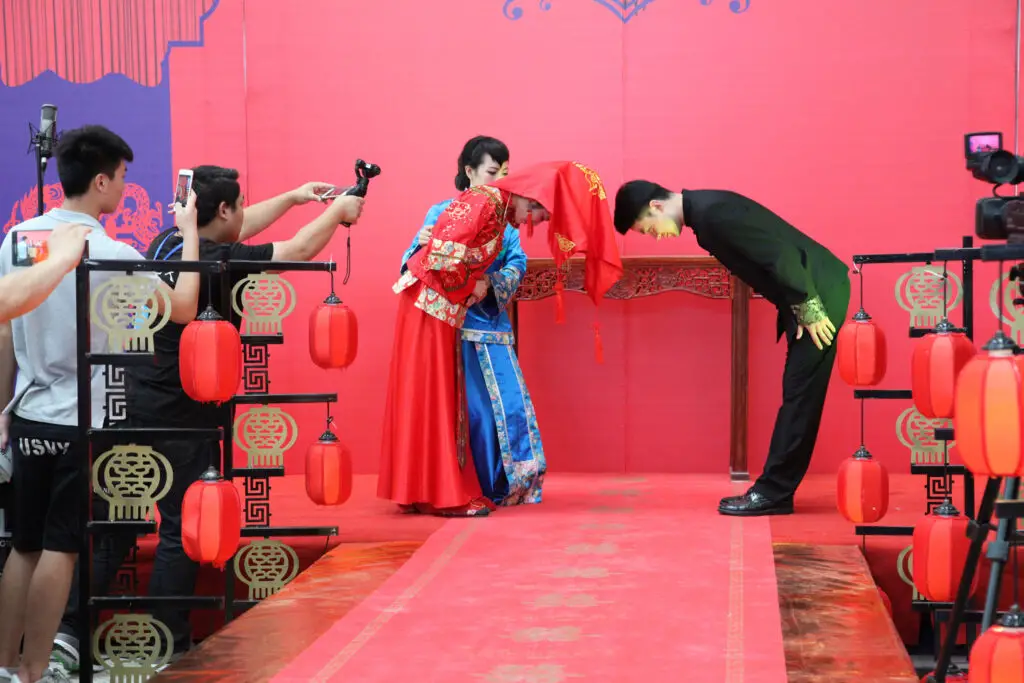
Chinese weddings are a mix of elaborate traditions and modern influences, often featuring multiple outfit changes for the bride. The celebrations start with the groom proving his devotion through “door games,” where he completes fun challenges set by the bride’s friends. A traditional tea ceremony follows, where the couple serves tea to their elders as a sign of respect. The banquet is a grand affair, featuring multiple courses of symbolic dishes like whole fish for abundance and dumplings for prosperity.
Red is the dominant color, symbolizing luck and happiness, and decorations are often adorned with the “double happiness” symbol. Firecrackers, lion dances, and extravagant performances add to the spectacle. The reception is lively, with guests playing games and giving red envelopes (hongbao) filled with money as gifts. Chinese weddings are carefully curated to honor family, tradition, and an auspicious start to married life.
6. Scotland: Kilts, Ceilidh Dancing, and Whiskey
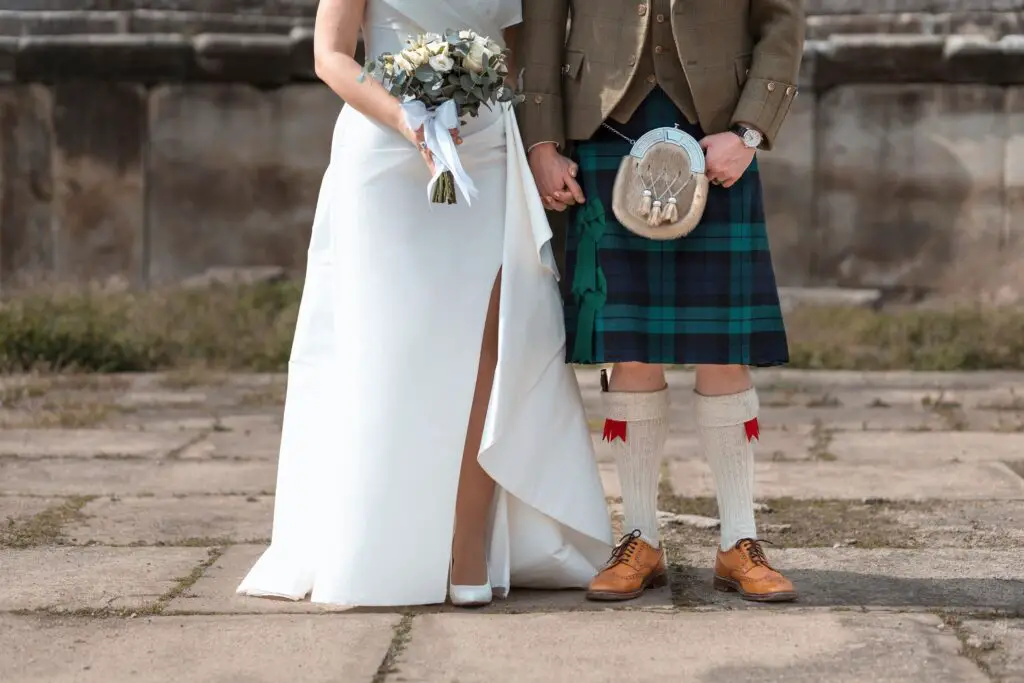
Scottish weddings are steeped in history, with grooms often wearing kilts in their family tartan. One of the most unique customs is the “handfasting” ceremony, where the couple’s hands are tied together with a ribbon, symbolizing their bond. Bagpipes set the tone for the day, filling the air with stirring melodies. The reception is an energetic affair, featuring Ceilidh dancing, where guests link arms and swirl around the dance floor.
Whiskey flows generously, and hearty Scottish dishes like haggis and shortbread keep everyone well-fed. Some couples incorporate the “scramble,” where the groom throws coins for children to collect, symbolizing future prosperity. A traditional “wedding ceilidh” ensures that even guests who don’t know the dances are pulled into the fun. It’s a beautiful blend of romance, culture, and unrestrained celebration.
7. Morocco: A Multi-Day Extravaganza
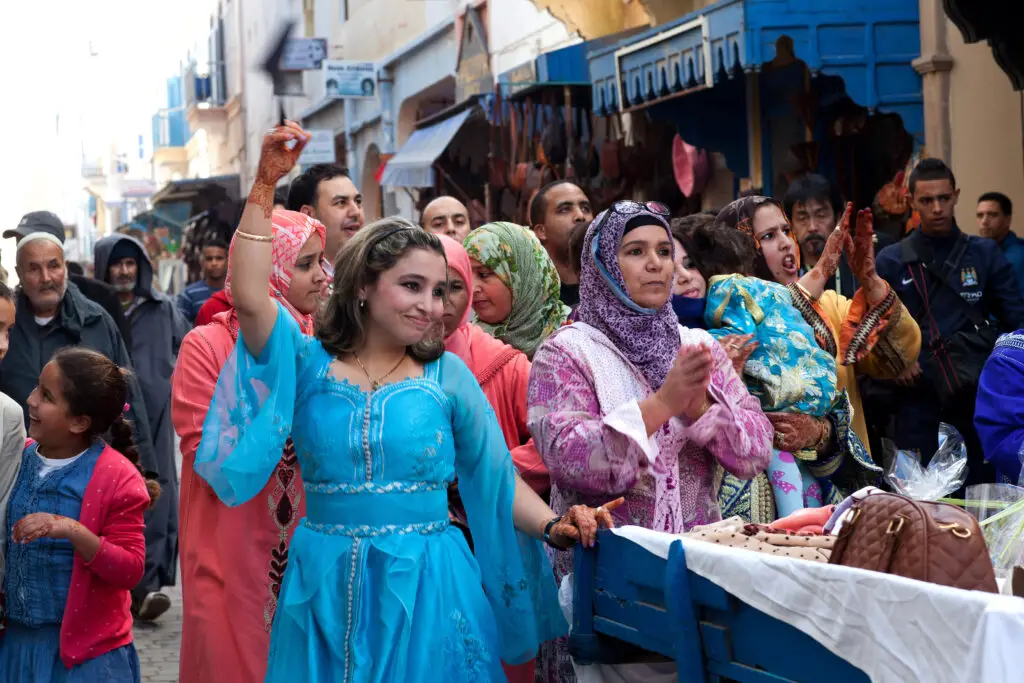
Moroccan weddings are luxurious, vibrant, and steeped in tradition, often lasting three to seven days. The celebrations begin with a Hammam ritual for the bride, followed by the Henna night, where intricate designs are painted on her hands for luck. The wedding day itself is a grand event, with the bride making multiple outfit changes, each more dazzling than the last. Traditional Moroccan music and drummers create a lively atmosphere, while delicious dishes like couscous, pastilla, and mint tea keep guests happy.
One of the highlights is the Amaria, where the bride is carried on a decorated platform by strong men while guests cheer. The couple is showered with blessings, and the dancing lasts well into the morning. Moroccan weddings bring together family, friends, and entire communities in a whirlwind of color, music, and joy. It’s a wedding experience like no other, where every detail feels magical.
8. Japan: Elegance and Time-Honored Rituals
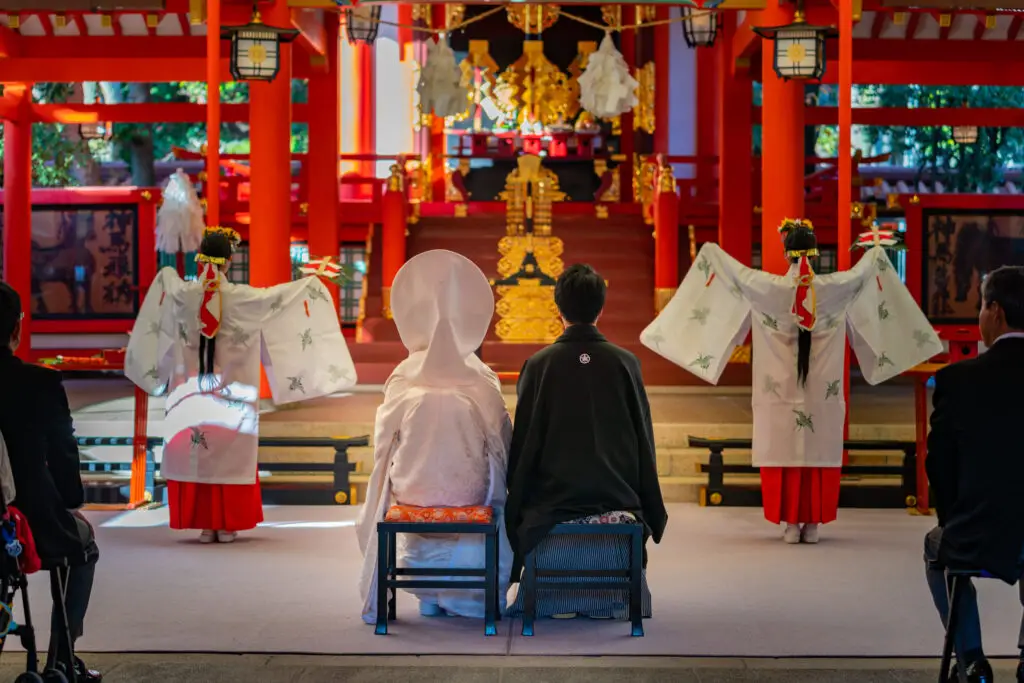
Japanese weddings are a beautiful blend of tradition and modernity, with Shinto ceremonies being particularly stunning. The bride often wears a white kimono called “shiro-muku,” symbolizing purity, while the groom dons a traditional montsuki. The couple takes part in the “san-san-kudo” ritual, where they sip sake three times from three different cups, signifying their bond. The ceremony is intimate, often held at a Shinto shrine with family members witnessing the sacred union.
At the reception, guests enjoy a meticulously arranged feast featuring sushi, tempura, and other delicacies. Instead of a gift registry, guests bring “goshugi,” money presented in beautifully decorated envelopes. Some couples change into Western attire for a second reception, blending old and new customs seamlessly. Japanese weddings are refined, deeply symbolic, and emphasize harmony, respect, and gratitude.
9. Brazil: Carnival-Level Energy
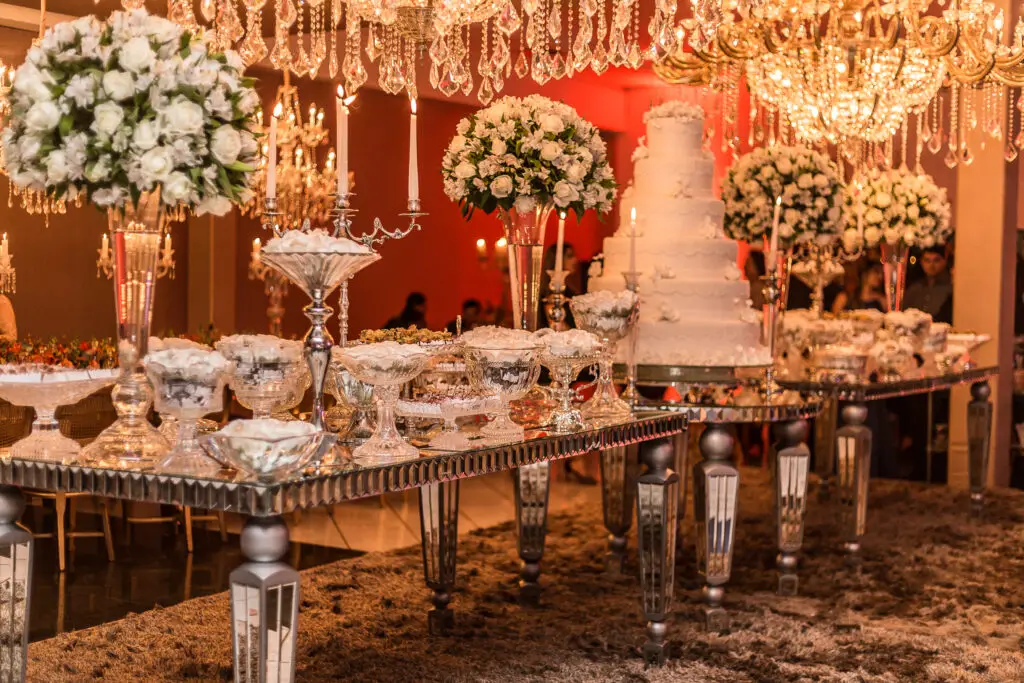
Brazilian weddings are all about passion, music, and nonstop fun, with celebrations lasting until sunrise. The ceremony is heartfelt, with personal vows and emotional moments between the couple and their families. But once the formalities are over, the reception explodes into a high-energy party. Samba music, live bands, and DJs keep the dance floor packed all night long.
One of the most entertaining traditions is the “casamento caipira,” a humorous skit where guests dress in exaggerated country-style costumes and act out a playful wedding scene. Drinks flow freely, with plenty of caipirinhas to go around, and the food is equally indulgent. A common highlight is the “bem casados,” small, sweet cakes symbolizing the couple’s new life together. Brazilian weddings are an unforgettable mix of romance and pure celebration, where no one wants the night to end.
10. Italy: Romance and Family at the Forefront

Italian weddings are steeped in love, tradition, and, of course, incredible food. The ceremony, often held in a historic church or breathtaking countryside venue, is filled with heartfelt moments. Afterward, the reception is an extravagant feast, with guests enjoying multiple courses of pasta, meats, seafood, and fine wine. The wedding cake, often a millefoglie, is a light and flaky masterpiece, unlike the heavy fondant cakes in some other cultures.
Dancing is a must, with guests twirling to live music and classic Italian tunes. A charming tradition is the “La Tarantella” dance, where guests form a circle and move in sync with lively folk music. Another fun custom is the breaking of a glass—the number of shattered pieces is said to predict the years of happiness the couple will share. Italian weddings are warm, joyful, and deeply family-oriented, with a focus on love, laughter, and togetherness.
11. Ethiopia: A Grand Royal-Like Affair
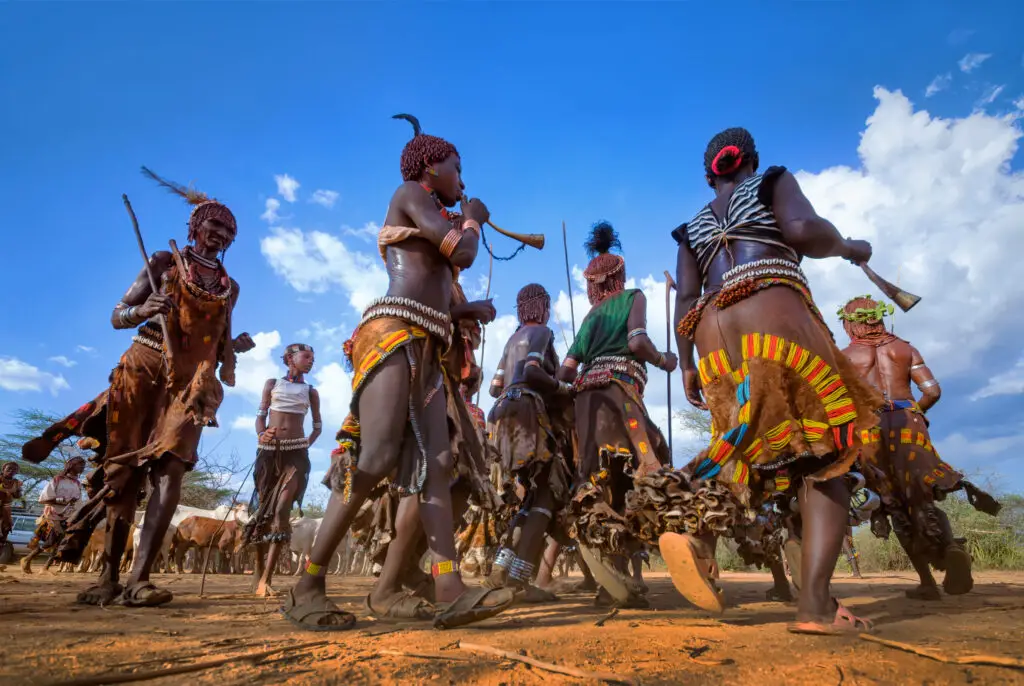
Ethiopian weddings are lavish, multi-day affairs steeped in cultural heritage and joy. The festivities often begin with the Telosh, a special pre-wedding event where the groom presents gifts to the bride’s family. On the wedding day, the bride and groom wear stunning Habesha garments embroidered with gold thread. The reception is a grand feast, featuring dishes like doro wat and injera, accompanied by traditional honey wine called tej.
One of the most exciting parts is the “Gursha” tradition, where guests feed the bride and groom bites of food as a gesture of love and care. The music is infectious, with guests dancing to the rhythms of Eskista, a unique shoulder-shaking dance. The couple is often showered with ululations—a high-pitched vocal expression of joy. Ethiopian weddings are filled with love, respect for family, and vibrant cultural expressions that make them unforgettable.
12. South Korea: A Blend of Ancient and Modern Traditions
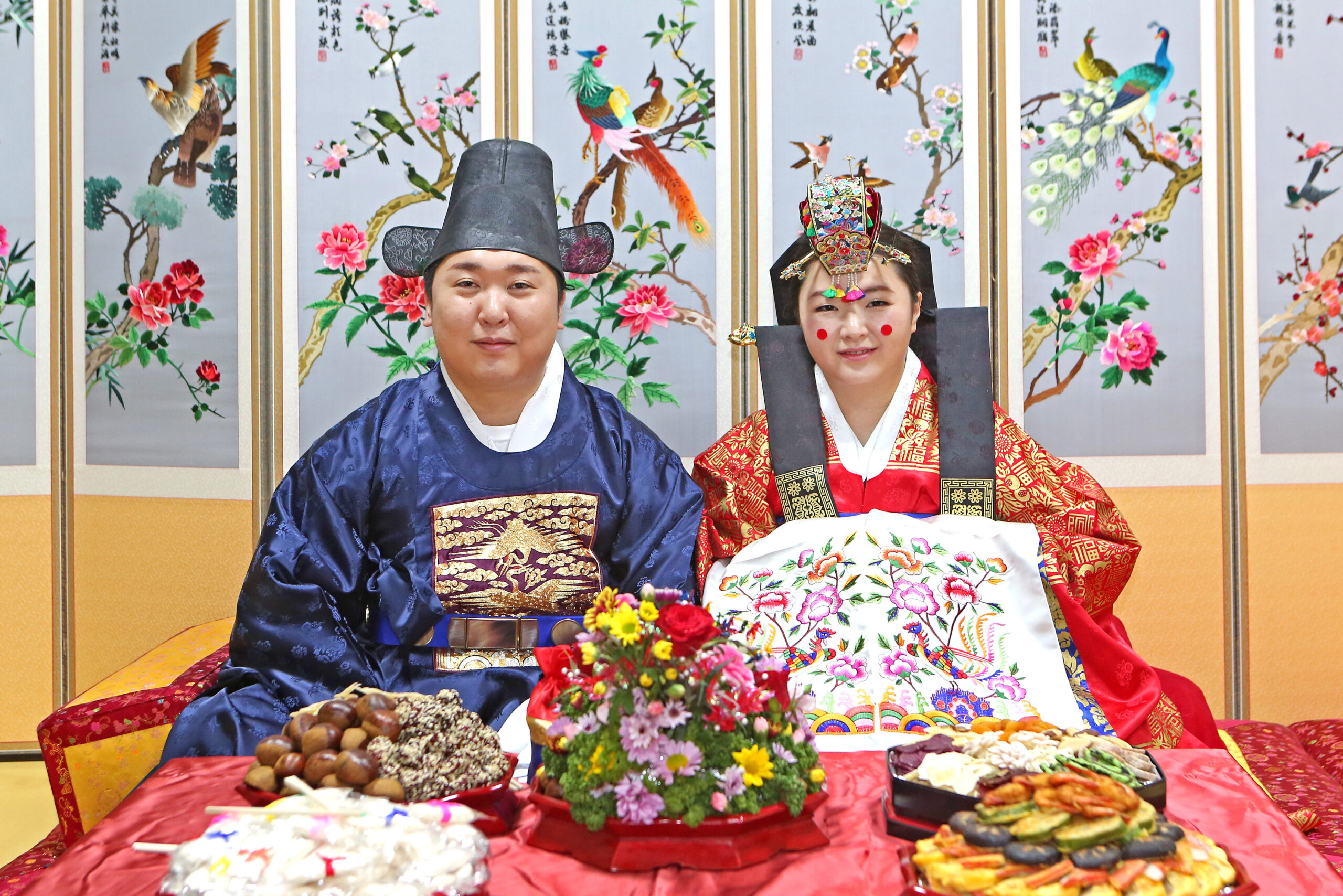
South Korean weddings beautifully mix traditional rituals with modern influences. The traditional “Paebaek” ceremony is a special moment where the couple bows to their elders and receives blessings. During this ceremony, the bride and groom try to catch chestnuts and dates tossed by their parents, symbolizing future children. The bride may wear a “hanbok,” a colorful traditional dress, while the groom wears a matching outfit.
Receptions are grand but efficient, often lasting just a few hours rather than all night. Guests enjoy a buffet-style meal, featuring Korean delicacies like bulgogi, kimchi, and rice cakes. Instead of wedding gifts, guests present money in elegant envelopes called “baek-il.” South Korean weddings are a perfect mix of deep respect for family and streamlined modern elegance, making them unique and meaningful.
13. Lebanon: Fireworks, Drums, and a Party Like No Other
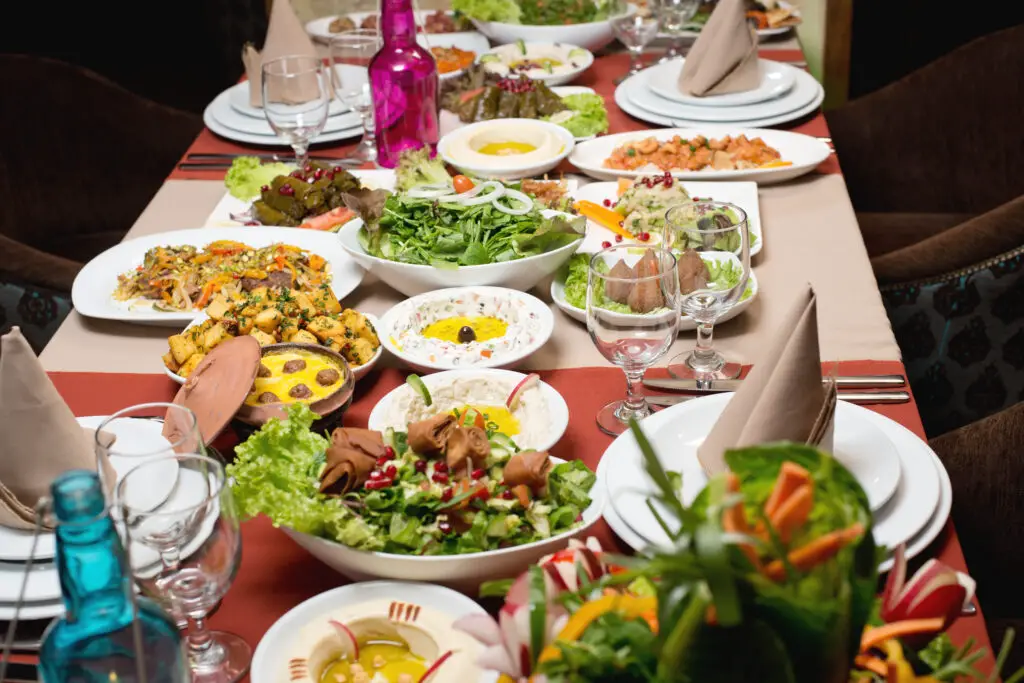
Lebanese weddings are extravagant, joyful, and filled with energy from start to finish. The celebrations begin with a lively “Zaffe,” where drummers, dancers, and singers accompany the groom’s entrance. The bride’s arrival is equally grand, with guests cheering, clapping, and throwing flower petals. The wedding reception is an all-night affair, featuring a luxurious spread of Lebanese mezze, grilled meats, and sweet treats like baklava.
Music is at the heart of the celebration, with guests dancing to Arabic beats, belly dancers performing, and sometimes even fireworks lighting up the sky. A fun tradition is the “Dabke,” a group dance where everyone holds hands and moves in sync to energetic folk music. Lebanese weddings spare no expense when it comes to creating a magical atmosphere. It’s an experience filled with passion, culture, and non-stop fun.
14. Indonesia: A Royal-Like Ceremony Full of Symbolism
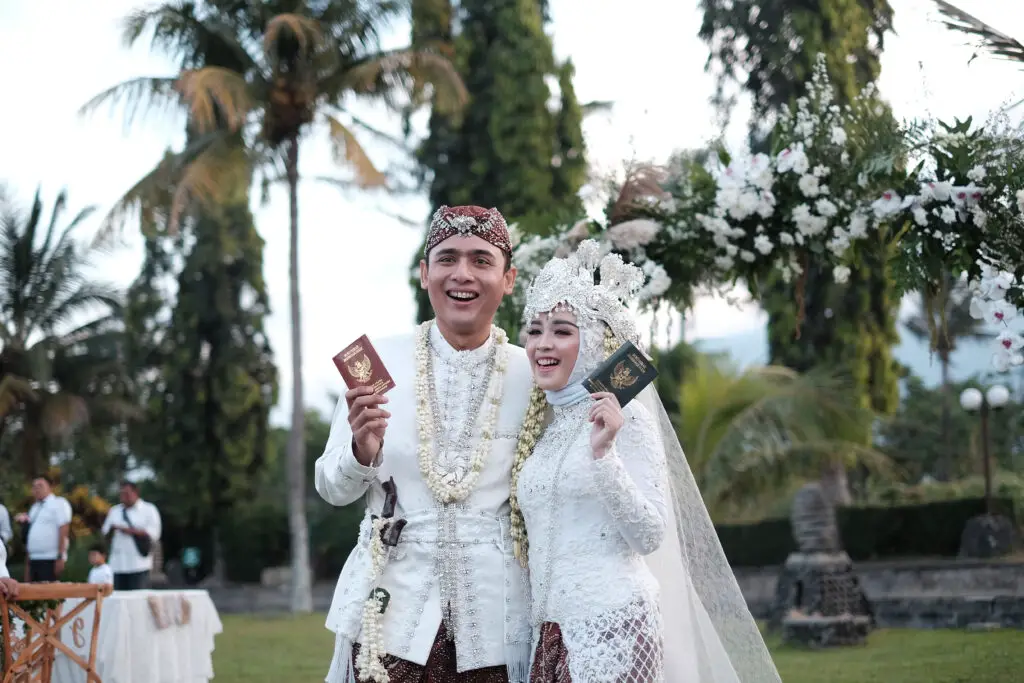
Indonesian weddings vary greatly depending on the region, but they are always grand and filled with deep cultural meaning. Javanese weddings, for example, include the “Siraman” ritual, where the bride and groom are bathed with flower-infused water for purification. Another fascinating tradition is the “Sungkeman,” where the couple kneels before their parents to show respect and gratitude. The couple often wears regal-looking attire, adorned with intricate gold detailing.
The reception is an extravagant affair, featuring gamelan music, traditional dances, and a feast of local dishes like satay and nasi goreng. Some weddings include a “Pagar Ayu” lineup, where beautifully dressed bridesmaids welcome guests with elegance. A common tradition is the “Dodol Daun,” where the couple must work together to cut a sticky rice cake, symbolizing their teamwork in marriage. Indonesian weddings are rich in tradition, beauty, and heartfelt customs that make them truly special.
